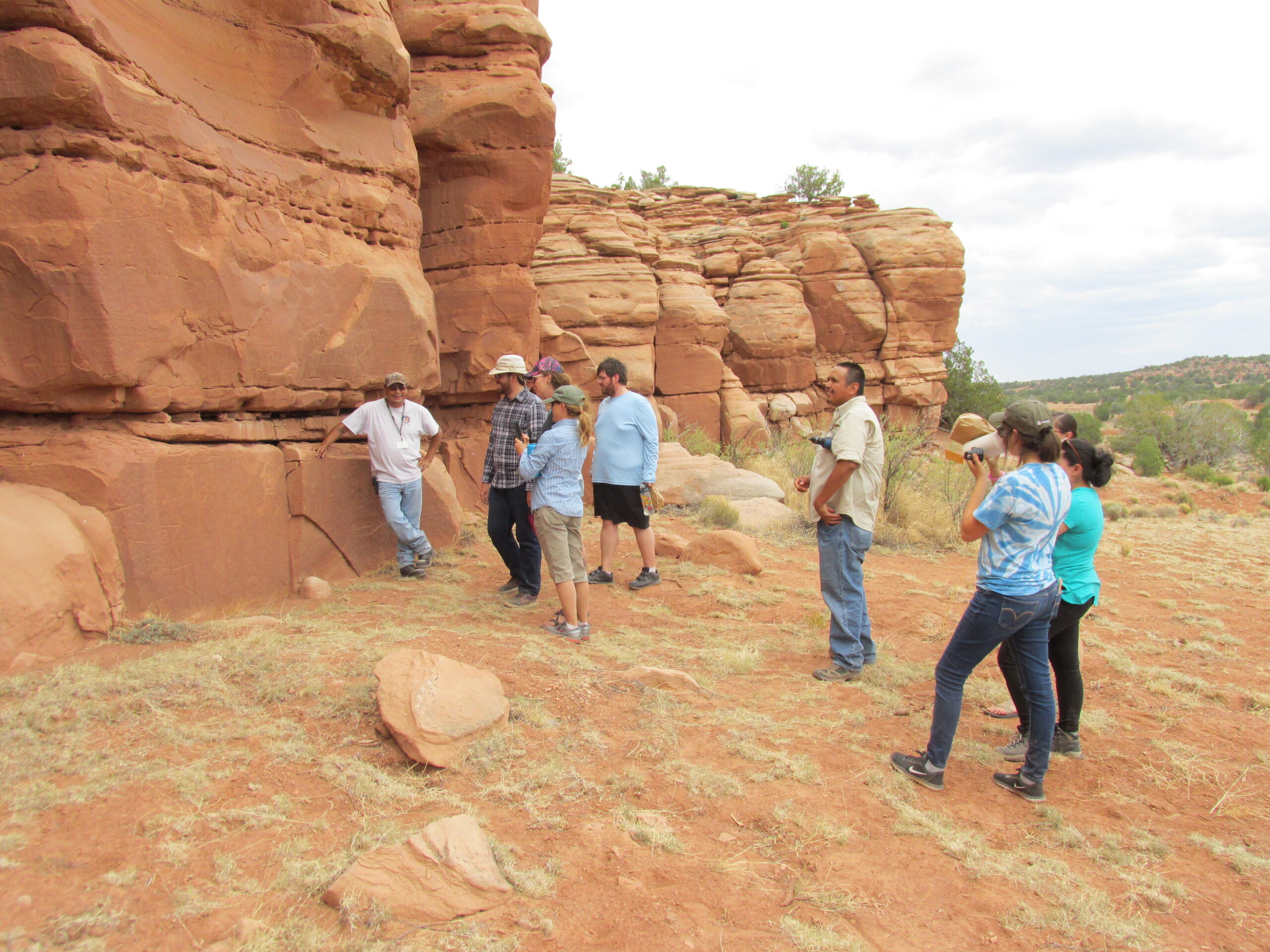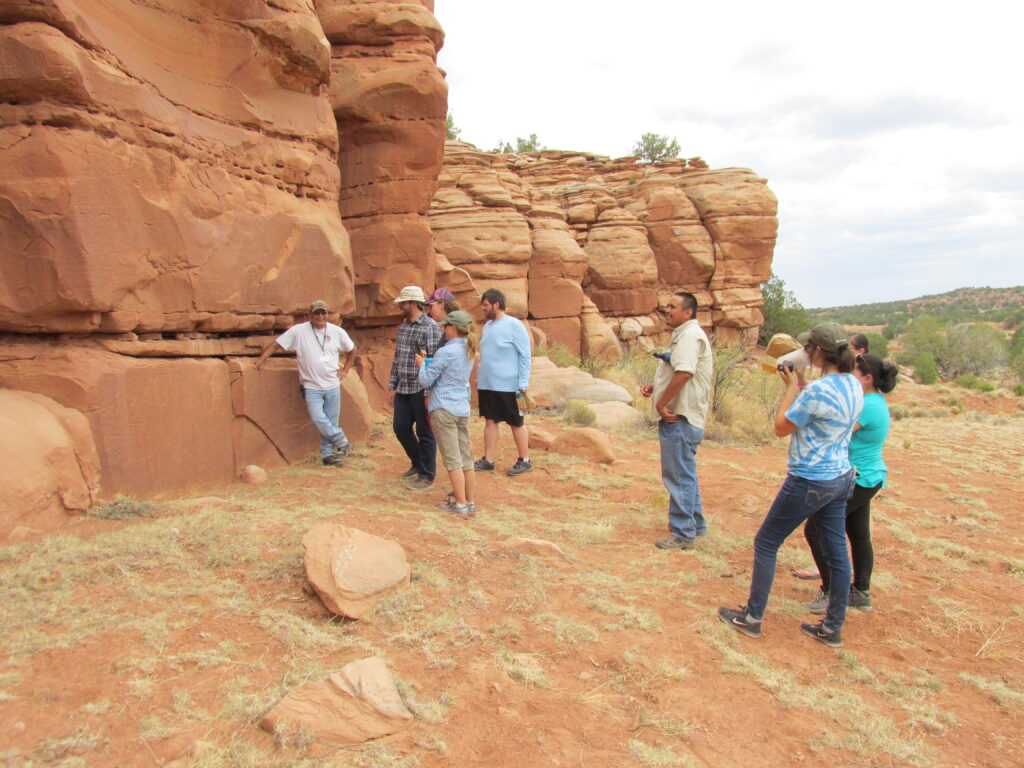How Respect and Cultural Awareness Protect Archaeological Sites
“Archaeological sites being ‘abandoned’ doesn’t mean that they’re abandoned in the spiritual world. They are still a part of this culture. Tangible aspects were left there so that people don’t forget.”
Kenny Bowekaty, as told to Stacy Ryan
Kenny Bowekaty is from the Pueblo of Zuni and has worked as an archaeologist for over two decades. He is now a tour guide for the Zuni Visitor and Arts Center and is committed to using heritage tourism to raise cultural awareness. I met Kenny in 2014 when he conducted a site tour for the Archaeology Southwest-University of Arizona Upper Gila Preservation Archaeology Field School and I recently had the opportunity to talk to him about the problem of looting and vandalism.
The following is an excerpt from our conversation in November 2020 (edited for length and clarity).
Stacy: How did you get involved in archaeology and heritage tourism?
Kenny: I grew up on a farm in what is now Ojo Caliente and I come from a long line of spiritual leaders. I got into archaeology almost by accident. In high school, I was fortunate to have enough credits to take electives and I picked Anthropology/Archaeology 101. And then I met Dr. John Rick out of Stanford University and he took me under his wing. As I finished high school, Dr. Rick returned to conduct field school and I ended up in Stanford University studying anthropology and archaeology.
Becoming an archaeologist when you’re non-Native or non-Indigenous, it’s like you’re only looking in from the outside. I come from the people that a lot of archaeologists study and I have that as the first step — I’ve made the hearths, I’ve made the room structures for actual use in real life. To be an archaeologist, you almost have to be Zuni as well to understand the interpretations.
When I retired from archaeology, I knew I wanted to do tourism. My crusade is to educate the world in cultural resource management and cultural awareness. When folks like yourself and many others come through Zuni and spend time with me, they leave our village knowing that they got the best information they could.

Kenny Bowekaty leading a tour for Archaeology Southwest’s Preservation Archaeology Field School. (Image: Karen Schollmeyer, published with the permission of the Zuni Tribe)
Stacy: In what ways are sites, petroglyphs, artifacts, and cultural landscapes important to the Zuni people?
Kenny: I like to think they are the square root of evidence for our culture. Artifacts and sites are still spiritually inhabited. Landscapes, in many variations, we call traditional cultural properties: shrines, springs, mountains, peaks. Taking an artifact because you are enticed with it is not okay. These items are left there as a continuation of our religion and our culture. They will still be used for songs and prayers. Archaeological sites being “abandoned” doesn’t mean that they’re abandoned in the spiritual world. They are still a part of this culture. Tangible aspects were left there so that people don’t forget.
Stacy: Heritage tourism is an important aspect in raising cultural awareness. What else should be done to prevent vandalism and theft of archaeological and cultural resources?
Kenny: Segments like this are good to get people aware not to loot or take artifacts. If you ask a Native American, the answers are more diverse. I come from an entity that people are fascinated with and people don’t realize what they are taking and who they are taking from. They think it’s free to take, it’s just on the ground and no one is watching. But no you’re taking from me, you’re taking my culture, and I’m still here. So it’s just like me going into a church and taking things.
Awareness is key. Visitors come to spend a couple hours with me and when they leave I feel the gratitude that they leave here with. A better understanding of who we are and that really is my mission statement in tourism. I want my visitors to leave Zuni knowing that they came to a special place. And I think a lot of people actually get that.
Stacy: People are illegally digging on public lands, private lands, and Tribal lands. What types of looting and vandalism have you heard about or witnessed and how does this desecration impact you personally or your community?
Kenny: Unfortunately, I’ve seen a lot of looting and desecration in my career. Going to a looted site, where this was intentionally done, you think of the magnificence of these people and now it’s lost, things are displaced, desecrated. Those kinds of things are what we like to call bad karma. It will return.
And it’s the same with people taking artifacts. Recently we received a box through the visitor center and it was a box full of pottery. This individual said they picked these up a long time ago and they’re not in good health, they have nightmares. People say, “we’re sorry, I’m sending these back.” What people don’t understand about taking artifacts illegally is that they are taking something from somebody. These are significant religiously used items that actually belong to somebody. I’ve seen all kinds of looting and I think this is why I’m still a tour guide. Tourism assists me in educating people from all walks of life, and this is where the community benefits.
Stacy: What else would you like to say about looting and vandalism and protecting cultural resources?
Kenny: Just that the common law is to respect. Think about that value and think about what you’re defacing. I want people to know about if you have any questions about these people, who they were, and where they went, come to Zuni. I’ll tell you who they are and where we still are.
Links
Video: Zuni World View
Archaeology Southwest Magazine: Respect the Land You Stand Upon
By Stacy Ryan and Kenny Bowekaty

